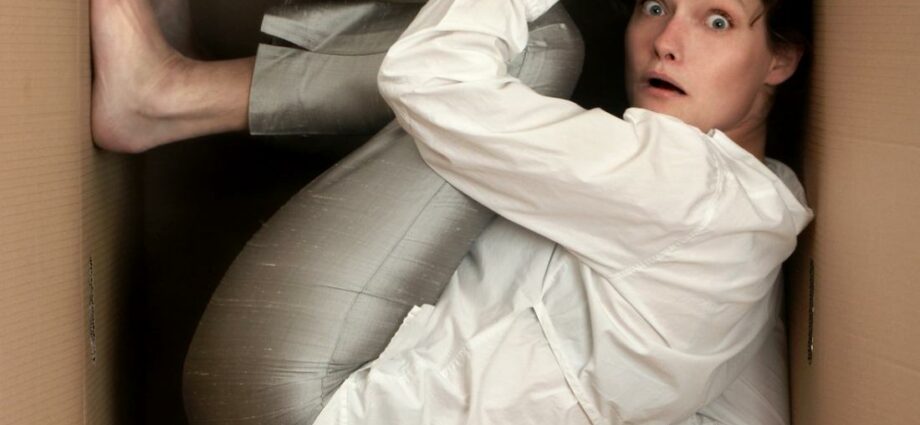Contents
Claustrophobia
Claustrophobia is the phobia of confinement. It can represent a real handicap so it is important to treat it. Cognitive and behavioral therapies are effective.
Claustrophobia, what is it?
Definition
Claustrophobia is a phobia which consists of a panic fear of confinement, of enclosed spaces: elevator, metro, train, but also small or windowless rooms …
Causes
Claustrophobia starts at a time when the person is in a state of fragility. An event in childhood (having been locked up for example) or a traumatic event in an enclosed space (having been assaulted in the metro for example can explain claustrophobia. Scientists see them in phobias in general transmitted fears genetically.
Diagnostic
The diagnosis is clinical. A fear of being locked up must meet 5 criteria for a psychiatrist to diagnose a phobia: a persistent and intense fear of being in a closed place (or by anticipating this situation) with the impossibility of reasoning, a immediate and systematic reaction as soon as the person finds himself in a situation of confinement, the awareness of the excessive and irrational nature of his fear, the situations in which the person will find himself in an enclosed place are avoided at all costs or experienced with a great deal of anxiety, claustrophobia greatly disrupts a person’s activities. In addition, these disorders should not be explained by another disorder (agoraphobia, post-traumatic stress)
The people concerned
4 to 5% of the adult population suffers from claustrophobia. It is one of the most frequent phobias.
4 to 10% of radiologist patients cannot bear to go through scans or MRIs. Children can also suffer from claustrophobia.
Risk factors
People with anxiety disorders, depression, and excessive medication, drug or alcohol use are at greater risk of developing phobias.
Symptoms of claustrophobia
As with all phobias, the first symptom is intense and irrational fear: fear of being in an enclosed space or fear anticipating an enclosed space. This may be related to breathing. Claustrophobic people are afraid of running out of air.
The physical manifestations of claustrophobia
- Fear can cause a real panic attack with its signs:
- Palpitations, heartbeat, or rapid heartbeat
- Sensation of breathlessness or a feeling of suffocation
- Feeling dizzy, empty-headed or fainting
- Sweating, hot flashes, chest discomfort,
- Afraid of dying, of losing control
Treatment of claustrophobia
Cognitive behavioral therapy (CBT) works well for phobias. This therapy aims to expose the person to what causes their phobia, from afar and in a reassuring setting, then closer and closer to make the fear disappear. The fact of being confronted with the phobogenic object in a regular and progressive way rather than avoiding it makes it possible to make the fear disappear. Psychoanalysis can also be a solution to treat claustrophobia.
Drug treatments can be prescribed temporarily: anxiolytics, antidepressants.
Relaxation and the practice of yoga can also help people who suffer from claustrophobia.
Phobia: natural treatments
Essential oils with calming and relaxing properties can help prevent anxiety attacks. You can use for example by cutaneous or olfactory way essential oils of sweet orange, neroli, small grain bigarade.
Prevention of claustrophobia
Claustrophobia, like other phobias, cannot be prevented. On the other hand, when a phobia develops, it is important to take care of it before it becomes a handicap in everyday life.










